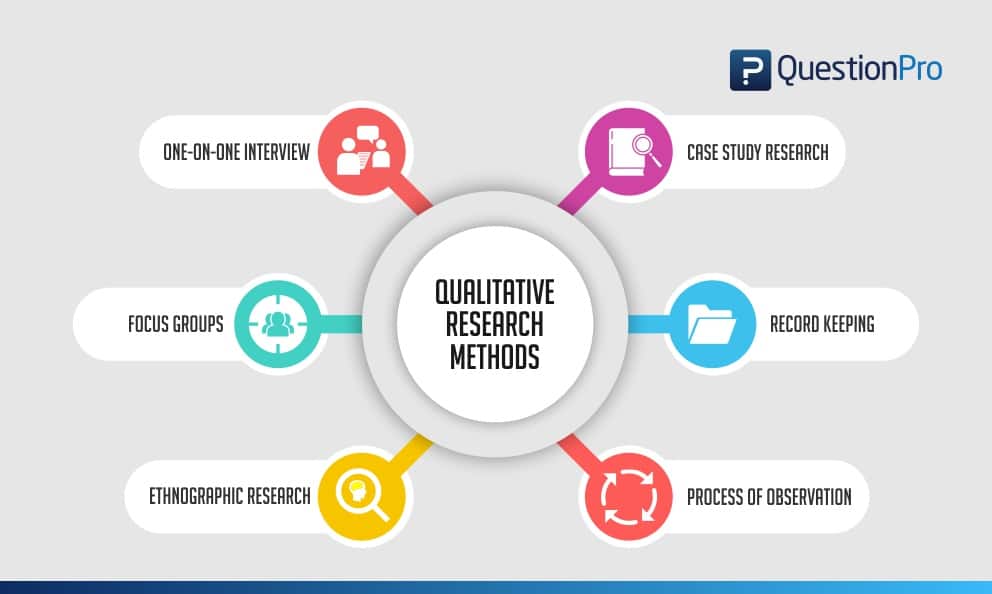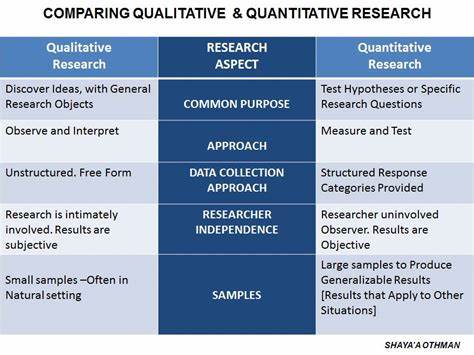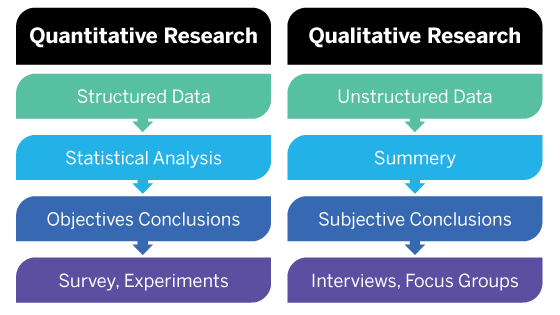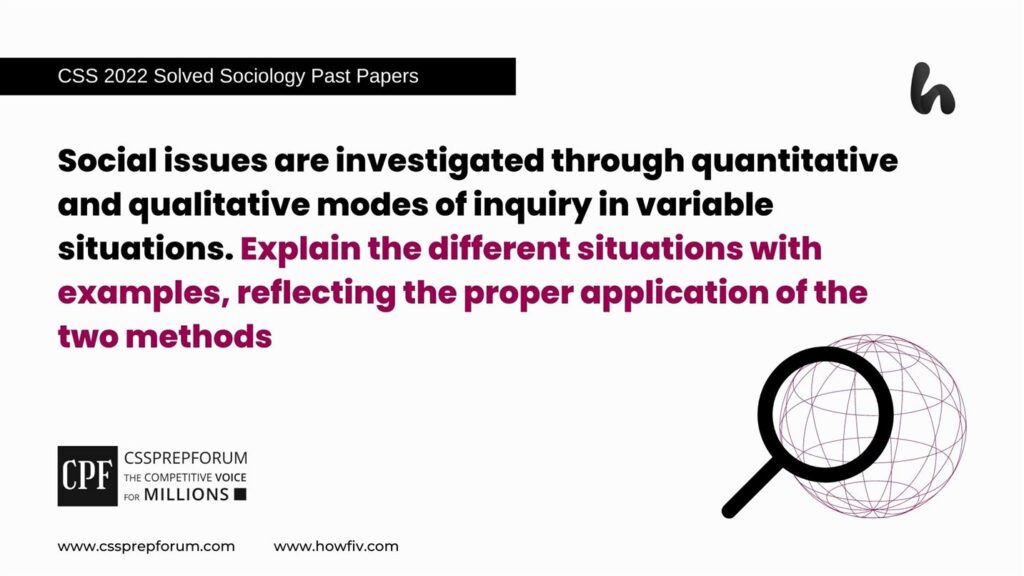CSS Solved Sociology Past Papers | Social issues are investigated through quantitative and qualitative modes of inquiry in variable situations. Explain the different situations with examples, reflecting the proper application of the two methods
The following question of Sociology is attempted on the same pattern, taught by Sir to his students, scoring the highest marks in compulsory subjects for years. This solved past paper question is uploaded to help aspirants understand how to crack a topic or question, how to write relevantly, what coherence is, and how to include and connect ideas, opinions, and suggestions to score the maximum.

Question Breakdown
In this question, the examiner demands the elaboration of investigative methods i.e. qualitative method and quantitative method in variable situations and the context of social issues. Additionally, it implies the enunciation of both methods concerning their application and examples from daily life.
Outline
1- Introduction
2- Investigation of social issues via Quantitative method
3- Investigation of social issues via Qualitative method
4- Quantitative method and Qualitative method concerning sociological perspectives
5- Synthesis
6- Conclusion

Answer to the question
Introduction:
In the study of social issues researchers often employ both quantitative and qualitative modes of inquiry to gain a comprehensive understanding of the phenomena that are under investigation. Both methods have their approaches respectively. Quantitative research involves the collection and analysis of numerical data to identify patterns which relies on structured data collection methods and statistical analysis to draw objective conclusions. This method is implied by surveys, experimentation, and statistical analysis of existing data. Likewise, the qualitative method of investigation focuses on in-depth exploration and understanding of social phenomena through the collection and analysis of non-numerical data such as interviews, observations and textual analysis. It is carried out by ethnographic studies, interviews and content analysis patterns. Sometimes the researchers combine both aforementioned methods to gain a comprehensive understanding of social issues which depends on the research question and the nature of the data.
Investigation of social issues via Quantitative method:

Investigating social issues through quantitative methods involves the collection of numerical data to uncover patterns, relationships, and trends. This approach relies on rigorous data collection techniques and statistical analyses to draw objective conclusions.
Here are some examples illustrating the application of quantitative methods in the investigation of social issues:
- 1- Poverty and Income Inequality:
Quantitative methods can be used to study the extent and distribution of poverty and income inequality in a society. Researchers may gather data on household incomes, assets and expenditures through surveys or administrative records. By applying statistical measures such as the Gini coefficient or poverty rates, they can analyze the data to understand the disparities and identify factors contributing to poverty and inequality.
- 2- Health Disparities:
In this regard, the quantitative method implicates healthcare access, outcomes and quality among different social groups. For instance, researchers may collect data on health indicators like mortality rates and disease prevalence and demographic factors like age, race and socioeconomic status from large-scale surveys or medical records. Statistical analyses can reveal variations in health outcomes and highlight the underlying social determinants of health disparities.
- 3- Educational achievement gap:
To investigate the educational achievement gap across different populations. Researchers may collect data on student performance, demographic information and educational resources from standardized tests, school records or national databases. By comparing groups based on factors such as race, socioeconomic status or parental education, statistical analyses can help identify disparities and evaluate the effectiveness of interventions or policies.
- 4- Public opinion and attitudes:
Quantitative investigation methods enable the examination of public opinion and attitudes towards social issues. Surveys conducted through random sampling or online platforms can collect data on people’s beliefs, attitudes and perceptions. Statistical analysis of survey responses allows researchers to identify trends, differences across demographic groups and changes over time providing insights into public sentiment on various social issues.
- 5- Crime and criminal justice:
In this scenario, quantitative methods can be employed to investigate crime rates, patterns and effectiveness of criminal justice policies. Researchers may analyze crime data from official records, such as police reports or court records to identify trends, geographical hotspots, and demographic factors associated with criminal activity. Statistical analyses can help evaluate the impact of interventions such as changes in law enforcement strategies or sentencing policies on crime rates.
These examples highlight how quantitative methods provide researchers with empirical evidence and statistical insights to understand social issues objectively. By analyzing large datasets and applying appropriate statistical techniques, researchers can uncover significant patterns and associations, which can inform policy-making and interventions aimed at addressing these social issues.
Investigation of social issues via Qualitative method:

Investigating social issues through qualitative methods involves the collection and analysis of non-numerical data to gain a deeper understanding of the subjective experiences, meanings and social contexts related to the issue at hand. Qualitative research methods allow researchers to explore complex social phenomena in their natural settings.
Here are some examples illustrating the application of qualitative methods in the investigation of social issues:
- 1- Gender Inequality in the Workplace:
Qualitative research can be used to explore the experiences and perceptions of individuals facing gender inequality in the workplace. Researchers may conduct in-depth interviews with employees to understand their lived experiences, challenges and strategies for navigating gender-related barriers. This qualitative approach helps capture the nuanced aspects of gender discrimination such as implicit bases, organizational cultures and power dynamics.
- 2- Homelessness and home insecurity:
Qualitative methods can provide insights into the experiences and underlying factors contributing to homelessness and housing insecurity. Researchers may conduct ethnographic studies, spending time with homeless individuals or marginalized communities to understand their daily lives, coping mechanisms and barriers to accessing stable housing. Through participant observation and in-depth interviews, researchers can explore the structural, economic and social issues related to homelessness.
- 3- Immigration and identity:
Qualitative research can shed light on the experience of immigrants and their negotiation of identities in a new cultural context. Researchers may conduct narrative interviews with immigrants allowing them to share their personal stories, challenges and strategies for adaptation. This approach helps uncover the complexities of cultural identity formation, acculturation and the impact of social policies on immigrant communities.
- 4- Youth activism and Social Movements:
To study youth activism and social movements qualitative methods can be used. Researchers may conduct focus group discussions or participant observations in activist spaces to understand the motivations, values and experiences of young activists. By analyzing their narratives and observing their interactions, researchers can gain insights into the social and political processes underlying youth mobilization and collective action.
- 5- Stigma and Mental Health:
Qualitative research can explore the lived experiences of individuals facing mental health challenges and the impact of stigma on their lives. Researchers may conduct in–depth interviews or use diary studies to assess the subjective experiences of individuals with mental health conditions. This approach allows researchers to understand the social and psychological dimensions of stigma, self-perception and the help-seeking process.
The above-mentioned examples demonstrate how qualitative methods provide rich and comprehensive understandings of social issues by delving into complexities, meanings and social contexts that quantitative approaches may not capture fully. By engaging with individuals and communities directly. Qualitative research can inform policy and practice by uncovering the subjective experiences, social dynamics and cultural nuances related to social issues.
Quantitative method and Qualitative method w.r.t. sociological perspectives:

The sociological conceptualization of the quantitative method and qualitative method is given below:
- 1- Quantitative method in sociological perspectives:
It involves the collection and analysis of numerical data to examine social phenomena and patterns. These methods are rooted in positivist or objectivist perspectives which seek to establish generalizable and objective knowledge about society.
Here are some key aspects of quantitative methods from sociological perspectives:
- Data collection: Quantitative methods rely on structured data collection techniques such as surveys, questionnaires or secondary data sources like official statistics. The goal is to obtain standardized and measurable data that can be analyzed statistically.
- Sampling: This investigation method involves the use of probability sampling methods to select representative samples from a larger population. This ensures that findings can be generalized to the broader population.
- Statistical Analysis: Quantitative researchers use statistical techniques to analyze the collected data. These techniques include descriptive statistics e.g. means, percentages and inferential statistics e.g. correlation, regression and hypothesis testing.
- Objectivity and Generalizability: Quantitative research aims for objectivity striving to eliminate researcher bias and subjectivity in data collection and analysis. The goal is to produce generalizability findings that can be applied to larger populations or social contexts.
- Deductive Reasoning: This investigative research method starts with a hypothesis or theory, which is then tested using empirical data. Researchers use deductive reasoning to analyze data and draw conclusions that either support or reject their initial hypotheses.
- 2- Qualitative Method in Sociological Perspectives:
This method focuses on understanding social phenomena through the exploration of meanings, subjective experiences and social processes. These methods are associated with interpretivism or constructionist perspectives, which emphasize the socially constructed nature of reality.
Some of the key aspects of qualitative methods in sociological perspectives are as follows:
- Data collection: Qualitative methods employ diverse data collection techniques such as in-depth interviews, participant observation, focus groups and textual analysis. These techniques allow researchers to gather rich, detailed and context-specific data.
- Sampling: It often uses purposive or theoretical sampling methods, aiming to select participants or cases that provide rich insights and diverse perspectives related to the research question.
- Interpretive Analysis: Qualitative researchers engage in a detailed analysis of the collected data using the techniques like thematic analysis, narrative analysis or grounded theory. The focus is on identifying patterns, themes and meanings that emerge from the data.
- Subjectivity and Contextuality: Qualitative researchers recognize the role of the researcher’s subjectivity and acknowledge that social phenomena are influenced by the specific social, cultural and historical contexts in which they occur.
- Inductive reasoning: This investigation method often follows an inductive approach starting with the collection and analysis of data and allowing themes and patterns to emerge from the bottom up. This allows for the development of new theories or revisions to existing theories based on empirical observations.
Synthesis:

Social issues are often complex and multifaceted, requiring a comprehensive understanding that goes beyond a single research approach. The investigation of social issues benefits from the use of both quantitative and qualitative modes of inquiry in various situations. By combining these methods, researchers can obtain a more holistic and nuanced understanding of the phenomena under study. The quantitative methods are valuable for the collection of numerical data by large-scale surveys, statistical analysis of data, and experimentation, whereas the Qualitative method is explored via ethnographic studies to collect the contextual data precisely. By employing both investigation methods, researchers become able to triangulate their findings, compare different perspectives and comprehensive understanding of social issues leading to well-informed recommendations and interventions to manage the complex nature of social problems.
Conclusion:
The idea of the matter is that social issues are effectively investigated through the combined use of quantitative and quantitative modes of inquiry. The choice between these methods depends on the research question, data availability and depth of understanding sought. The quantitative inquiry is held via surveys, experiments and content analysis for the collection of accurate and numerical data while the Qualitative inquiry implicates ethnographic studies, interviews and focus groups to extract the theoretical conceptualization of a social issue. With the combination of the aforementioned methods researcher get a deep and holistic solution for the social issue and this integration ensures the eradication of the anomaly caused by a social issue in the society.
CSS Solved Past Papers’ Essays
Looking for the last ten years of CSS and PMS Solved Essays and want to know how Sir Kazim’s students write and score the highest marks in the essays’ papers? Then, click on the CSS Solved Essays to start reading them.
CSS Solved Essays

CSS Solved General Science & Ability Past Papers
Want to read the last ten years’ General Science & Ability Solved Past Papers to learn how to attempt them and to score high? Let’s click on the link below to read them all freely. All past papers have been solved by Miss Iqra Ali & Dr Nishat Baloch, Pakistan’s top CSS GSA coach having the highest score of their students.
General Science & Ability Solved Past Papers
CSS Solved Pakistan Affairs Past Papers
Want to read CSS Pakistan Affairs Solved Past Papers and learn how to attempt them to score high? Let’s click on the link below to read them all freely. All past papers’ questions have been attempted by Sir Kazim’s students, who scored the highest in the subject.
CSS Solved Pakistan Affairs
CSS Solved International Relations’ Past Papers
Have you opted for International Relations in the CSS examination and want to score above 150? Then, click on the CSS Solved International Relations’ Past Papers by Miss Abeera Fatima, the top IR scorer and the best IR coach in Pakistan.
CSS Solved International Relations Past Papers
Articles Might Interest You!
The following are some of the most important articles for CSS and PMS aspirants. Click on any to start reading.












